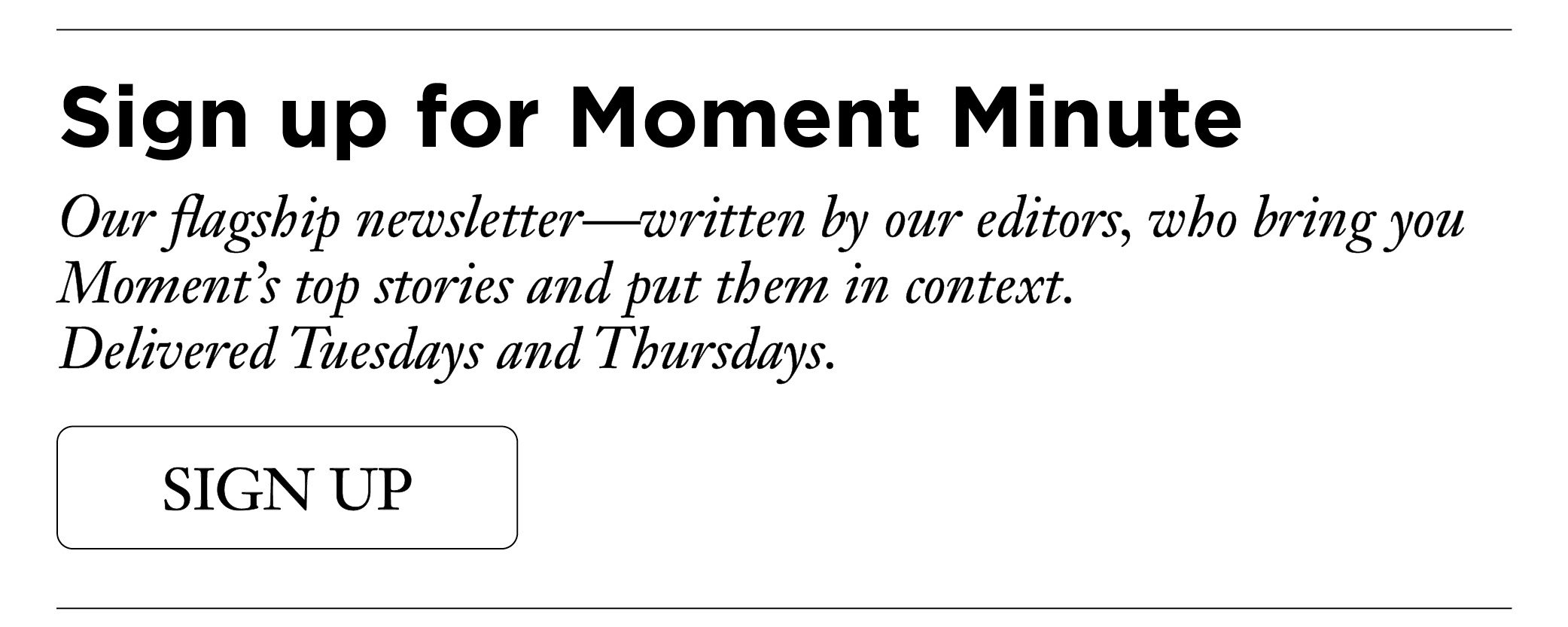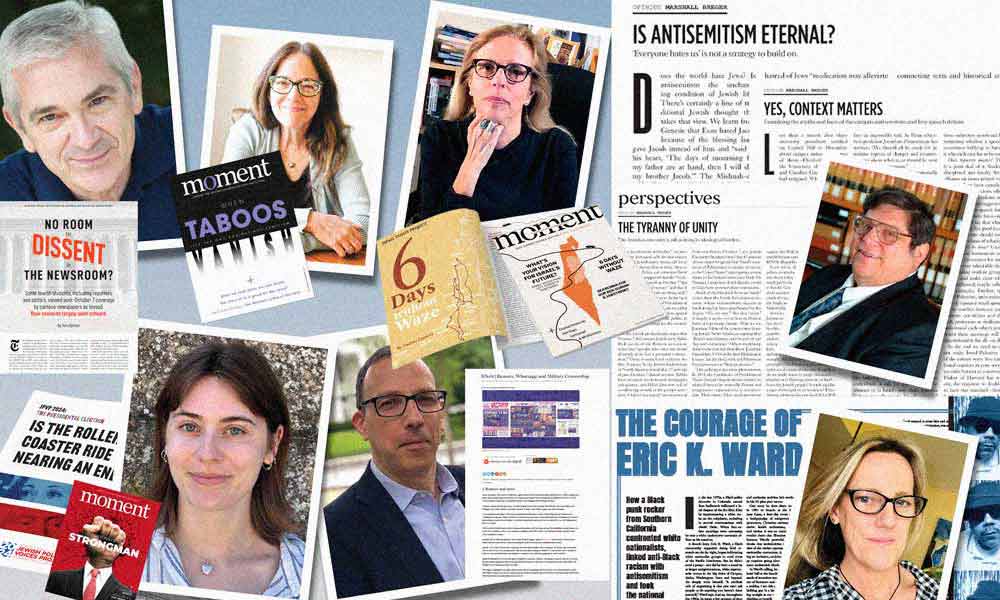
Is there a secret formula to producing a great piece of journalism? How is an idea conceived? How is it developed?
To shed some light on these questions, we asked several of our award-winning contributors to provide insight into their writing process and how their articles came to be. As their stories reveal, the formula is fairly straightforward, although there are always curves and road blocks to navigate along the way.
It starts with an idea, a good one, self-generated or derived from an outside source—often as a result of dialogue with our editorial staff, our advisory board members, and even our subscribers. That idea is then developed through research, interviews, legwork, reflection and thoughtful, well-crafted writing. A good ear for language and a knack for organization helps in shaping and editing an article, and at a magazine like ours, there’s the invaluable feedback and advice from our talented and knowledgeable staff.
All of which doesn’t make it any less remarkable when over the course of a single year, one magazine—in this case, Moment—manages to merit 27 prestigious Simon Rockower Awards from the American Jewish Press Association. We hope that the seven behind-the-scenes stories that follow enrich your Moment reading experience.
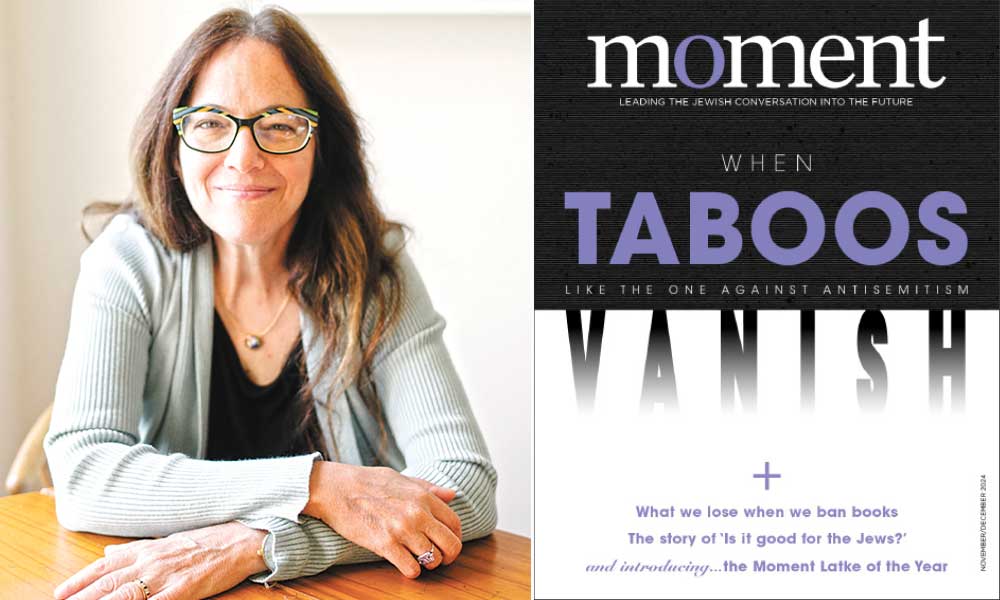
THE VANISHING ANTISEMITISM TABOO
First Place, Excellence in Writing about Antisemitism
I’d been thinking for years about the ideas that ended up in “The Vanishing Antisemitism Taboo,” which starts with a story about an incident I witnessed in 1996. An audience at a classical music concert in Washington, DC, came together spontaneously to express outrage after a British performer sang an antisemitic lyric; the event created a mini-scandal and I wrote about it for The Washington Post, where I was then a columnist. The experience got me thinking about how taboos function in public life and why at least some taboos are important—and fragile.
Over the years, the topic continued to preoccupy me. It seemed to become only more pressing as some kinds of taboo speech have become more tolerated—including many views about Jews and Israel—while other new taboos have come into force. Against this backdrop of shifting and collapsing taboos new and old, Moment Editor-in-Chief Nadine Epstein suggested I go deeply into the state of the antisemitism taboo, and with her help and intensive guidance from her and Editor Sarah Breger, it ended up as a cover piece. In writing it, I concluded that while the antisemitism taboo still holds some force in American life, not only is it softening (even more so now than when the piece was published), but the very tactics by which we try to prop it up may have helped erode it.
As we proceed further into an age of falling taboos on every side, I’m sorry to say I expect to return to this topic frequently.—Amy E. Schwartz
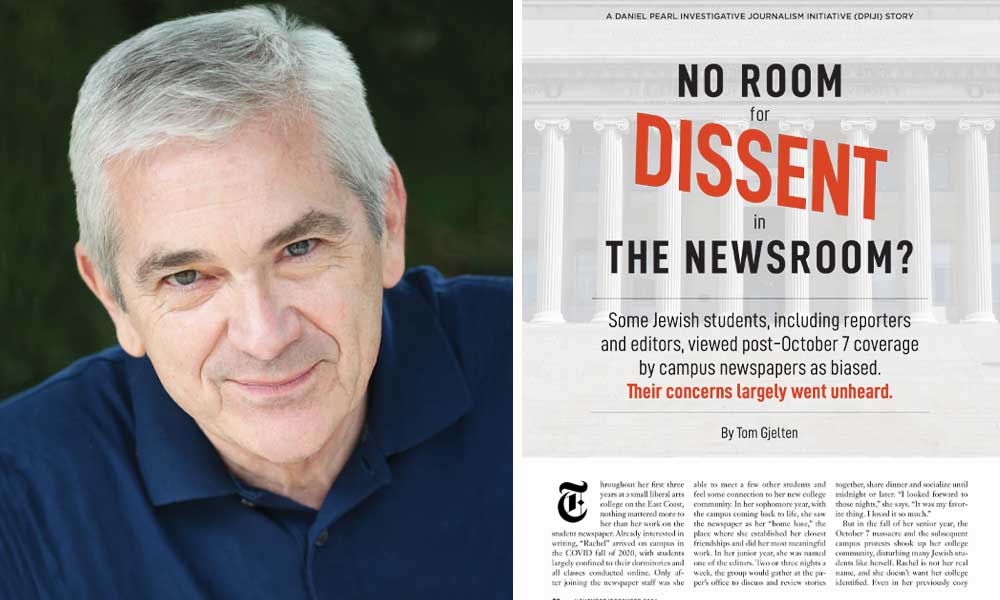
Tom Gjelten
NO ROOM FOR DISSENT IN THE NEWSROOM?
First Place, The Boris Smolar Award for Excellence in Enterprise or Investigative Reporting
Honorable Mention, Wild Card Category for Excellence in Writing about the War in Israel: Schools and Universities
Nadine Epstein and I both worked in college journalism in our much younger days, and I recall a conversation we had in the spring of 2024 about the challenges then facing student journalists, given the intensity of campus unrest over the war in Gaza. I noted that these new protests were roiling campuses as the antiwar protests of the 1960s and early 1970s had done. But a big difference was that the protests of my generation were about a distant war mostly unrelated to the university communities themselves.
They were not directed at other students or even the university administrations, except in those cases where they focused on ROTC programs. By contrast, the new protests were more localized, centering on university investments and affiliations and often targeting students or faculty who sympathized with Israel or merely happened to be Jewish. I recalled that it was hard enough in our day to maintain journalistic standards in our coverage of the antiwar movement, given our own sympathies, and I figured it must be even harder for student editors and reporters in the aftermath of October 7 to be fair and impartial. I pointed out that Jewish students were probably well represented at the biggest college newspapers, and that it would be interesting to find out how they in particular were managing.
Not surprisingly, I found it to be a sensitive subject, and many Jewish student journalists were reluctant to speak publicly for fear of jeopardizing their positions on their college papers, or simply because they didn’t want to stand out. It was apparent, however, that many of them were distressed by the circumstances in which they found themselves. With the assistance of some of Moment’s own student interns, I was ultimately able to make contact with enough of them, either on the record or on background, to craft a story. One student, who did not want to be identified or even have her college named, told me that working on the student newspaper had been “her favorite thing” in her early college experience, but that after October 7, discussions over coverage of the pro-Palestinian protests on her campus became so difficult that by the end of her senior year she wanted “to leave it all behind.” I learned that many other Jewish students had similar experiences, enough so that the story in our judgment warranted an in-depth treatment.—Tom Gjelten
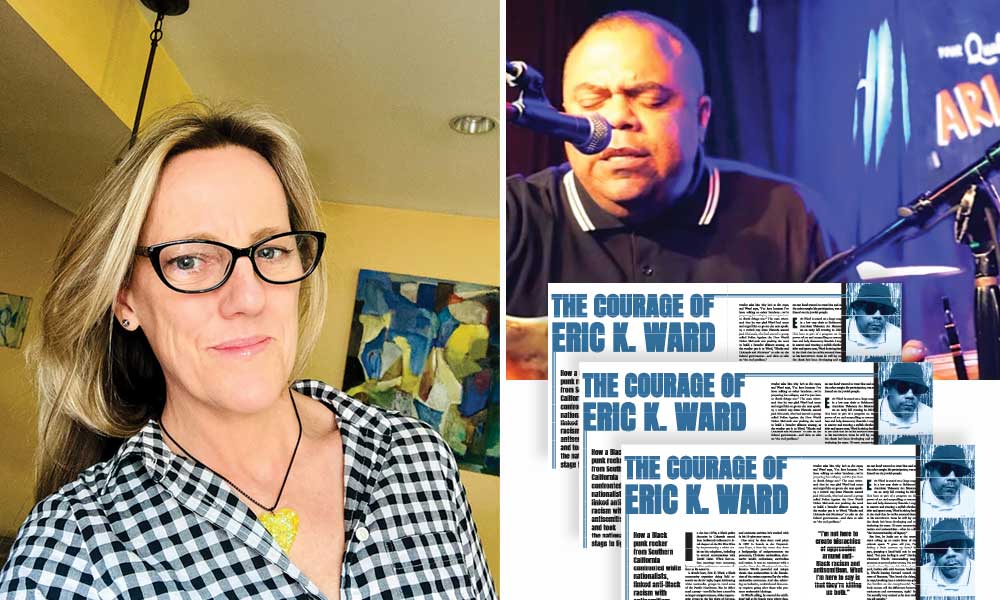
Jennifer Bardi. (Right photo credit: Courtesy of Eric K. Ward)
First Place for Excellence in Personality Profiles
Second Place for Excellence in Writing about Antisemitism
When I was first assigned to write a profile on Eric Ward, I quickly learned that his background was in community organizing and music and that he was an expert on white supremacist hate groups. I was fascinated to discover that as a young Black field researcher in the Pacific Northwest, he had zealously studied the culture and communications of such groups, and had even met directly with members at great personal risk. In doing so, Ward developed a unique thesis—that antisemitism is the foundation of white nationalist ideology and action. I also learned that Ward grew up in Southern California, as did I, that he played in a punk rock band called Sloppy Seconds, and that we may have even gone to some of the same L.A. shows in the 1980s.
After I attended several events where he was a featured speaker, it became clear to me that Eric Ward is a rockstar on multiple fronts—a magnetic communicator, an adventurer with a mischievous spirit and a changemaker in Jewish and broader civil rights spaces. I saw him get a standing ovation at Temple Micah in Washington, DC, another at the Visionary Art Museum in Baltimore, and then again at Moment’s annual gala. After interviewing him one-on-one for a good hour, speaking with some of his former colleagues and reading as much as I could about his life and work, I turned in a draft that I thought captured Ward well. And yet, questions remained about pivotal moments in his life and how they connected. My editors, Nadine Epstein and Sarah Breger, said, “Talk to him some more. Tell a fuller story.”
Ward is a man in demand, traveling more often than not, so it took a while to get another interview. When we did meet again over Zoom, we ended up talking for close to three hours. His generosity and willingness to share so many stories—at turns hilarious, tragic and formative—turned a decent profile into an award-winning one. There was a section on his family that didn’t make the final cut—a story about his great-aunt Mamie fleeing the scene of a lynching in Bullitt County, KY, in 1904—but Ward’s own childhood experiences of racism and poverty and later glimpses, as a young punk rocker, of what a multicultural society could be are key to the piece and to who he is today.
I’m glad I got to write “The Courage of Eric K. Ward,” because his message is absolutely vital—a message not just about antisemitism but about alliance. Today, forces of hate are finding strong allies here and abroad. Those who champion truth, democracy, decency and inclusion must forge their own strong bonds in order to face hate head-on.—Jennifer Bardi
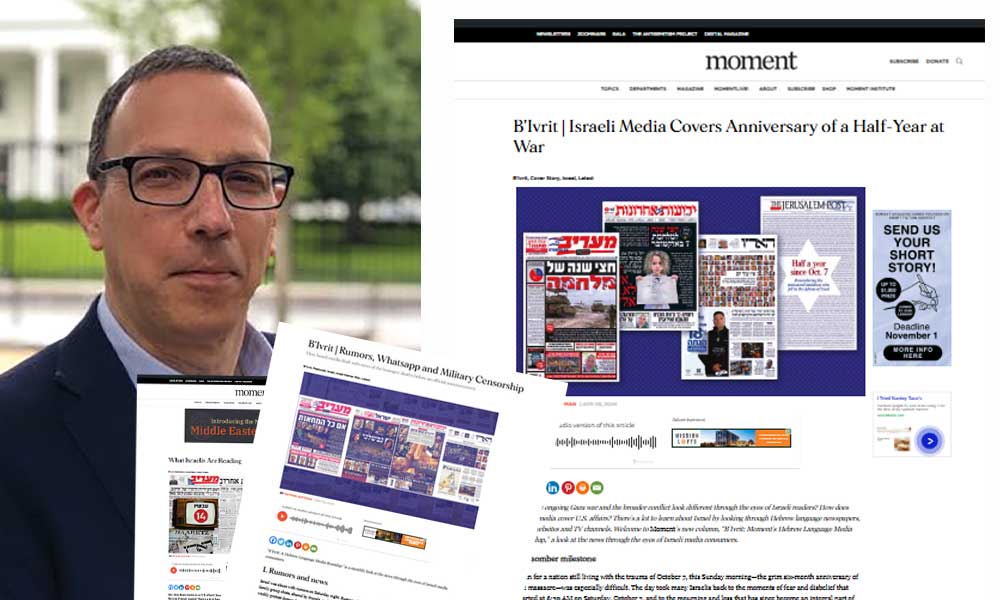
Nathan Guttman
RUMORS, WHATSAPP AND MILITARY CENSORSHIP
ISRAELI MEDIA COVERS ANNIVERSARY OF A HALF-YEAR AT WAR
First Place, Journalistic Excellence in Covering Zionism, Aliyah and Israel
The idea of a regular monthly column covering the Israeli press came from Editor-in-Chief Nadine Epstein and Editor Sarah Breger, who identified a glaring gap in the Israeli media coverage of Israel. While there’s no shortage of on-the-ground reporting, and while readers in the United States have endless opportunities to access what Israeli leaders, politicians and scholars have to say, little attention has been paid to what Israelis are reading in their newspapers, on their news websites and social media feeds, and watching on TV news. After brainstorming possible names for this regular feature, we settled eventually on “B’Ivrit,” which simply means “in Hebrew.”
The introductory column, titled “What Israelis Are Reading,” tried to provide our American readers with a glimpse into Israel’s daily news cycle. It included the coverage of the release of two hostages in a daring military operation, the dilemma surrounding the future of the war in Gaza and the way the Israeli press was covering America’s presidential race.
The column “Rumors, WhatsApp, and Military Censorship” sheds light on how Israelis increasingly trust unofficial WhatsApp channels for their news, many times bypassing traditional media, which is bound to restrictions set by military censorship. The speed and breadth of these unofficial media outlets—sometimes organized and at times nothing more than a family group chat—are remarkable, but alongside real news, they’re also prone to spreading rumors and, at times, falsehoods.—Nathan Guttman

Marshall Breger z”l
First Place, The Louis Rapoport Award for Excellence in Commentary
In August, longtime Moment columnist Marshall Breger unexpectedly passed away. A few weeks before, I’d called him to congratulate him on this award, and he was delighted. Through the years Marshall’s columns have always been reliably deep and insightful, befitting a lawyer who was a scholar, professor and a veteran of high-level Washington, DC, including stints at the White House. His commentary was also grounded in Jewish learning, befitting a deeply observant Jew. The winning 2024 columns are all of this and more.
In “Yes, Context Matters,” which appeared in the Winter 2024 issue, he plunged right into the myths and facts of the campus antisemitism and free-speech debate. Granting that “it’s offensive and unpleasant for a Jewish student to hear hateful language about Israel on campus,” Marshall asked: “How much weight should be given to these subjective emotional feelings in determining whether a specific experience constitutes bullying or harassment? This is why each case has to be context-specific.”
In “Is Antisemitism Eternal?” (Summer 2024) he challenged fellow Jews to acknowledge that “Everyone hates us” is not the best strategy for analyzing and combatting antisemitism. “This kind of essentialist argument,” he argued, “though in an odd way comforting (It’s not us, it’s them!), is dangerous.”
In “The Tyranny of Unity” (November/December 2024) Marshall examined how the Jewish community polices its ideological borders, warning that the quest for Jewish unity may lead to a purging of ideological dissenters. “Calls for unity usually work as an enforcement mechanism…to tell us who are the real Jews and who are the fake (let alone self-hating) ones.”
In our last conversation, Marshall and I discussed the current tendency of American Jews to condemn those with whom they disagree. This troubles me and I knew Marshall would understand. Like me, he found this behavior counterproductive. Rather than be an antidote to antisemitism, it made it worse, he told me. I suggested he write a future column on the topic and he agreed. Marshall also shared with me the details of his experience as White House Jewish liaison during the Reagan administration, particularly during the Bitburg controversy. He said he’d never had any desire to write a tell-all, but I argued that he needed to get it down on paper for posterity’s sake. He said he’d think about it. Sadly, we’ll never read either of these columns.
Marshall began writing for Moment in 1994, long before I came to the magazine. It is hard to envision our Opinions roster without this unique thinker. The only solace is that he has bequeathed us his wisdom and points of view through his decades of columns, and they have become part of us.—Nadine Epstein

Erica Cash
IS THE ROLLER COASTER RIDE NEARING AN END?
FROM THE MARGINS TO THE MAINSTREAM
WHAT BANNED BOOK CHANGED YOUR LIFE?
First Place, Award for Outstanding Accomplishments—Graphic Artist
Everything about Moment is a collaboration, and the design of the print magazine is no exception. Each issue I spend many late nights at the office sitting in front of the computer with Moment Editor-in-Chief Nadine Epstein wondering “What if we turn it upside down?” Of course, there are many other considerations. I read each story during and after the editing process to decide how to make it come alive. All four of the winning designs were an amalgamation of ideas and visions, including input from multiple editors.
The Fall 2024 cover, “The Return of the Strongman,” had well over 30 drafts, which, by the way, is not even close to our record for the number of cover drafts. Thirty drafts of different colors, different fonts, different styles. I played with putting the heads of current political strongmen onto the bodies of old-timey circus bodybuilders, eventually landing instead on a fist coming out of the neck of an anonymous body in a business suit, glass shattering in the background. I wanted to capture the ferocity, but also the cowardice, of the strongman who comes barreling in only to continue the same tired, hateful tropes.
That same issue featured the article “Is the Roller Coaster Ride Coming to an End?” as part of our Jewish Political Voices Project. The layout was a puzzle waiting to be solved, with various lengths of participants’ answers to questions about the 2024 presidential race that needed to all fit together. The opening spread featured candidates Kamala Harris and Donald Trump, showing only their eyes and mouths in their respective party’s colors. I added a halftone effect to the images, giving it a comic-book style, showdown feeling.
I did hours of photo research for Sarah Breger and Sue Fishkoff’s feature story about Chabad in the double summer issue, “From the Margins to the Mainstream.” The subhead, which asked if Chabad was now the largest Jewish denomination, was set against a photo of a sea of Chabad men. The image, a mix of tradition and modernity, conformity and individuality, set the tone for the story. Our big question, “What Banned Book Changed Your Life?” in the November/December issue, played with lines, crossing out our chosen controversial book titles. I was eager to have this design visualize what we lose when we censor.
It is beyond exciting to be recognized by the AJPA for the design work I do here. I may be the only designer at Moment, but the final design is a product of the whole team.—Erica Cash

Nadine Epstein
SIX DAYS WITHOUT WAZE
Second Place, Journalistic Excellence in Covering Zionism, Aliyah and Israel
SEARCHING FOUR OUR BEN-GURION AND JABOTINSKY
Honorable Mention, Excellence in Single Commentary
In the months after October 7, 2023, I struggled to comprehend what Israelis were thinking about the direction of their country. There’s only so much you can discern from afar, so the following May, I broke away early from Moment’s Jewish Heritage Tour of Portugal and Spain and flew to Israel. Moment Israel Editor Eetta Prince-Gibson met me at the airport (still largely empty except for the long, tense line at the car rental counter), and together, we crisscrossed the country by car, doing what I love—meeting with and listening to as many people as possible. Not government officials but journalists, rabbis, activists, academics, students, settlers, soldiers, really whomever, from as wide a range of Israeli society as we could manage to find. I was 100 percent focused on absorbing and learning. This kind of reporting is intense, sometimes exhausting, but also incredibly rewarding.
It quickly became clear that across the board, Israelis were still in a state of depression, and that the brief moment of post-October 7 unity had dissipated. What struck me most was how people of different political and religious bents had not only come away with very different lessons from October 7 but were certain that all intelligent Israelis felt the way they did. Like Americans today, Israelis largely live in silos and rarely get to know people who hold dramatically divergent views. This was especially evident at two receptions Moment hosted for contributors, friends and acquaintances, one in Jerusalem, the other in Jaffa. Several guests took me aside and thanked me for the rare opportunity of being in the same room with people outside their own milieu.
After speaking to about 75 people in six days, more than half of them official interviews, I flew back to Washington, DC. I conducted a few more interviews by Zoom to fill in holes in perspectives. I could have kept going (there are always more holes to fill), but there’s a certain point at which you’ve got to stop reporting and start writing. Drawing themes out of that many interviews, however, can be daunting. As usual, my first draft was sprawling. It was tamed by Moment’s talented and wise editorial team, to whom I am forever grateful for teaching me so much every day.
Eventually two pieces emerged from that first draft. One was the cover essay “Six Days Without Waze,” a portrait of the deep divisions within Israel and how different Israelis I spoke with envisioned the country’s path forward. The title referred to the beloved Israeli-invented GPS app that during my stay was often scrambled to make it harder for Hezbollah operatives to accurately target missiles. Without Waze, or a map in the rental car, it was hard to navigate, which became my metaphor for a country that felt lost. The second piece filled the “From the Editor” column and was titled “Searching for Our Ben-Gurion and Jabotinsky.” During my stay I visited Ben-Gurion University, and a friend and board member arranged a private tour for me of the Ben-Gurion Archive at Sde Boker.
I found seeing Israel’s first prime minister’s original journals and letters thrilling. In one 1934 journal entry, he wrote about reconciling with Ze’ev Jabotinsky, his bitter rival, in order to prevent the Yishuv, the pre-state Jewish government in Israel, from disintegrating into civil war. Inspired that two enemies had come together for the sake of unity, I built “Searching for…” around two contemporary young men with political dreams who had very different backgrounds and political beliefs. Their friendship, and their willingness to work together, gave me hope for Israel’s future. It is critical to remember that there is more to Israel than the choice between Netanyahu or no Netanyahu.
In the year since I wrote these stories, there have been enormous changes in the Middle East. A new war has been fought while the old one festers. Trauma has settled like a haze over the land, hostages remain captive and the situation in Gaza is deeply unsettled—and concerning. But the core of what I wrote remains true. Israelis are as deeply divided now as then, and most cannot see beyond the walls they have built or that have been built for them.—Nadine Epstein
Other Awards
First Place Awards
Excellence in Writing about Jewish Thought and Life;
Excellence in Arts—Review/Criticism
Amy E. Schwartz
Excellence in Writing about Politics/Government
Jacob Forman
Excellence in North American Jewish History
Dan Freedman
Excellence in Writing about Food and Wine
Diane M. Bolz
Second Place Awards
Excellence in News Reporting
Noah Phillips
Excellence in Single Commentary
Gershom Gorenberg
Excellence in Writing about Food and Wine
Vered Guttman
Excellence in Personality Profiles
Carlin Romano
Excellence in Writing about Sports
Molly Kurtzer-Ellenbogen
Excellence in Education Reporting; Wild Card Category for Excellence in Writing about the War in Israel: Schools and Universities
Efrat Lachter
Honorable Mentions
Excellence in Arts—Review/Criticism
Robert Siegel
Excellence in Writing about Jewish Thought and Life
Jennifer Bardi
Excellence in Writing about Jewish Heritage and Jewish Peoplehood in Europe
Diane M. Bolz


